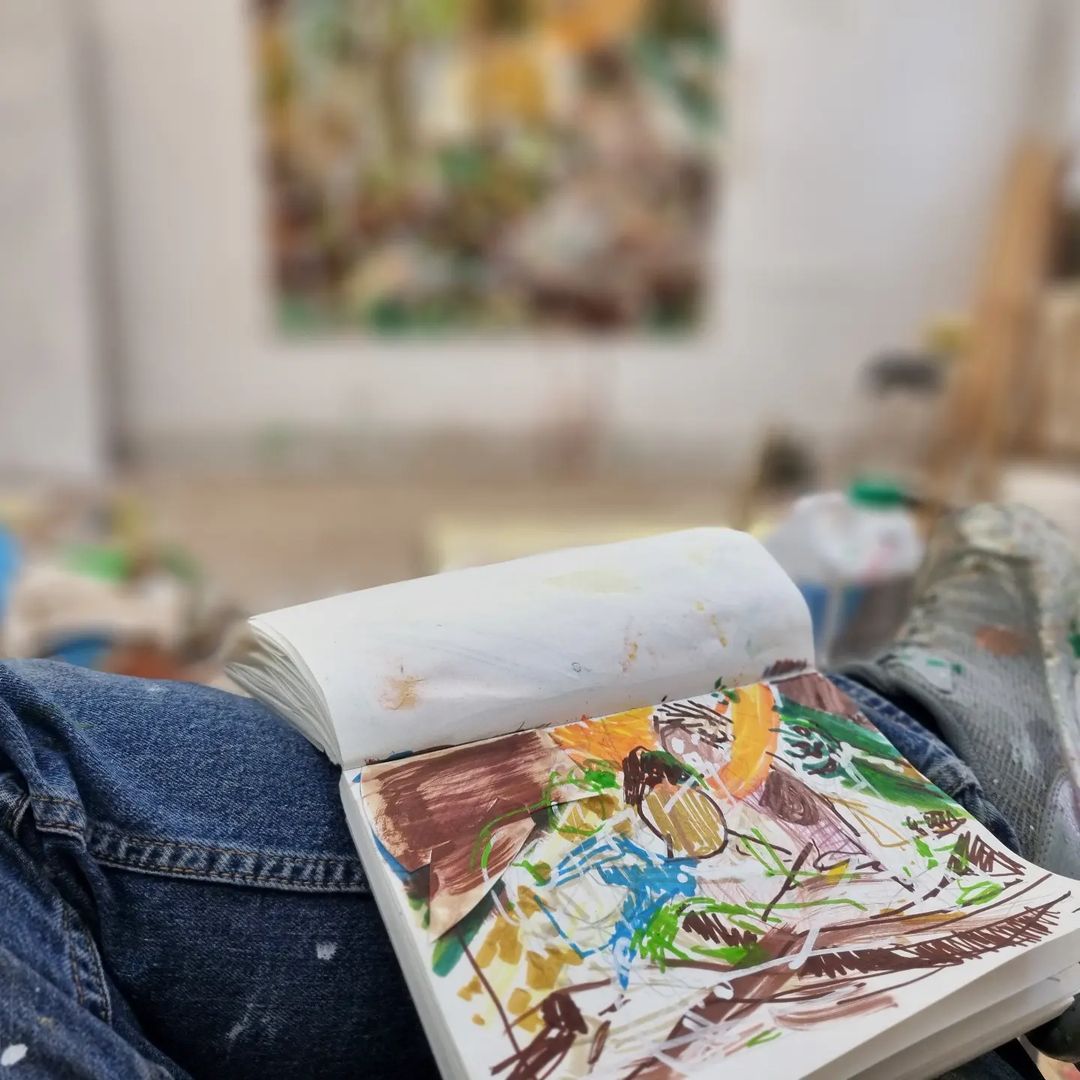Me Neither
For years I had not really given much thought to Henri Matisse. He was a historical footnote, someone you pass on the street in your art history travels. But this all changed when I literally did pass by him, or at least an image of his on a book. The small Taschen book of his work is a typical survey that you find everywhere, but when I opened it, I was immediately taken in. Then this not so small book started travelling with me, following me, and the more time I spent with it, the more I was impressed. Matisse is pure painting…
This quiet French artist dressed simply, had a full family, reportedly refrained from vices – he was an odd one. He seemed to always sit just outside everyone’s comfort zone, pushing through the criticism to create unadulterated pure expression of painting and drawing merging on canvas and paper.
Finding harmony within his work, not only within the larger elements of design but also through representing his life experiences on the canvas, Matisse considered everything. For every shift in color we have a counterbalance. His use of black and white within the work never feels extraneous. We feel the sitters in the spaces, their personalities; even the room has a presence, its decor giving off an energy as if the walls themselves were breathing. It is life-affirming.
The joy of creativity seems almost suspect in a way; it appears effortless. Through his letters, we know that it was actually intense labor painting so close the edge, and then clearly stepping over the edge, resulting in withering criticism and ostracization. Matisse is said to have remarked, “It has bothered me all my life that I do not paint like everybody else.” Yet Matisse is a model of an artist who appeared to follow his intuitive drive. Despite his outward appearance of timidity, the revolution was happening in his studio. Matisse owned his painting practice, examined what he was drawn to, and unapologetically broke the current rules.
Matisse seemed to be ‘in painting’ as if each painting were the groundwork for something in the next stage. For the upcoming show Matisse: In Search of True Painting, the Metropolitan Museum of Art rightly notes in the exhibition press text, “He used his completed paintings as tools, repeating compositions in order to compare effects and gauge his progress.” One marker for the most serious of artists is that they are so engaged in the creative act that they are not making “pictures” in a sense, but are using the process to guide them. Matisse revisited themes, forms, and shifts in color, in order to “find.” He seemed to be searching in places where only a few were engaged, pondering work from Asia and spending months with Byzantine Russian icons.
Matisse represents the honest and radical expression of the practice of painting. Few artists have had light, color, line, and form all merge so completely. His valuing the articulation of his developing language over conformity seems almost naive and romantic, but it also holds integrity. In 21st-century “remote, cool, and essentialist” perceptions, it may perhaps be seen suspiciously, since vulnerability, a daring use of color, and the love of the act of painting generally generate mistrust amongst conservative reductionists.
Author Hilary Spurling writes that often Matisse had to revisit his work in order to understand what he had accomplished, to finally see it clearly. This is the enigma for so many painters. If you are painting on the edge, you sometimes cannot see clearly what has transpired. Each additional stage brings something new outside previous experience. When Matisse revealed recent work to a group, one said, “I – I don’t understand that.” Matisse lit his cigarette and coolly responded, “Me neither.”
Michael Markwick
Matisse the Master: A Life of Henri Matisse: The Conquest of Colour, 1909-1954 by Hilary Spurling
Matisse: In Search of True Painting, December 4, 2012—March 17, 2013
http://www.metmuseum.org/about-the-museum/press-room/exhibitions/2012/matisse
The above essay was published originally in the Dutch painting journal PRESENTeert.
